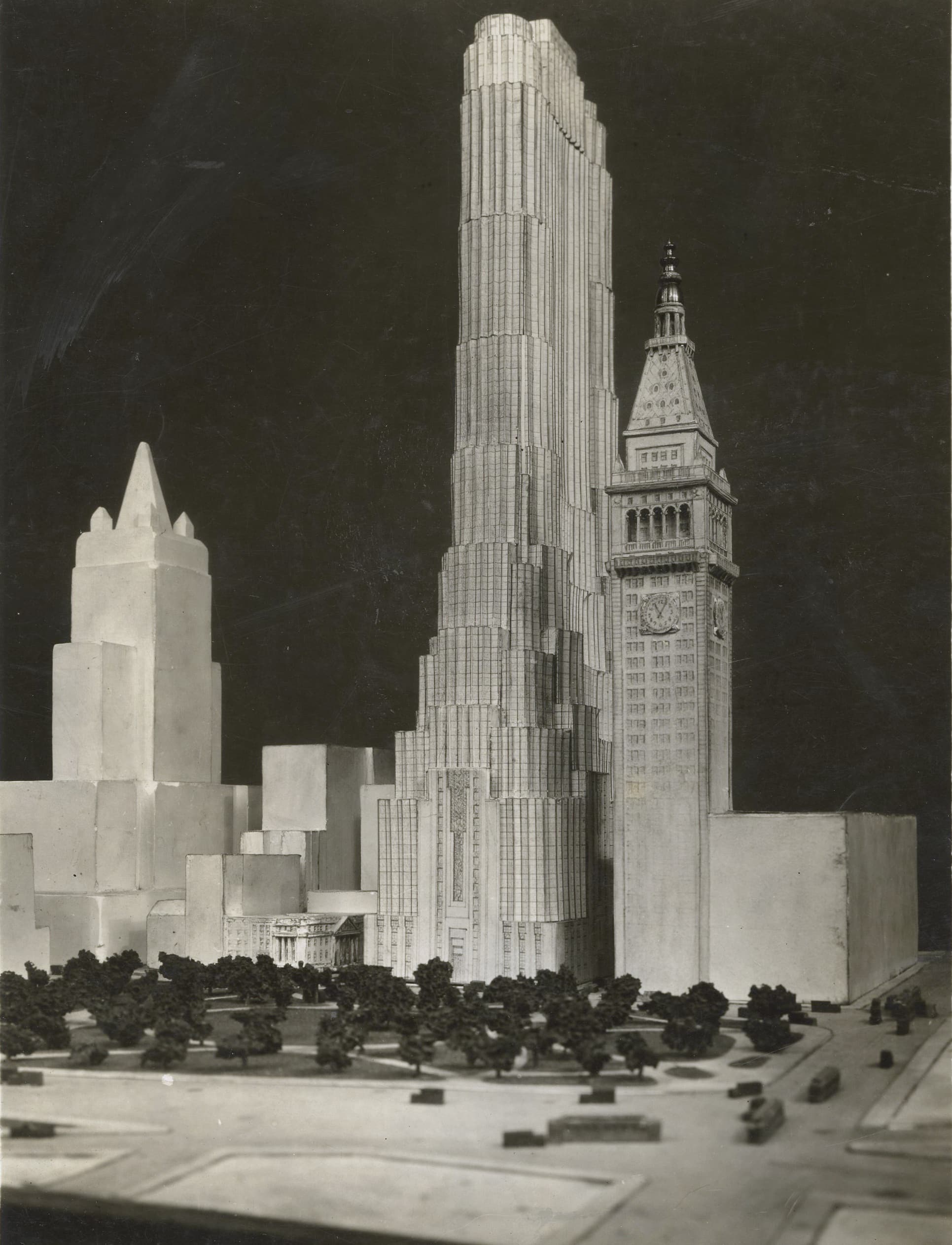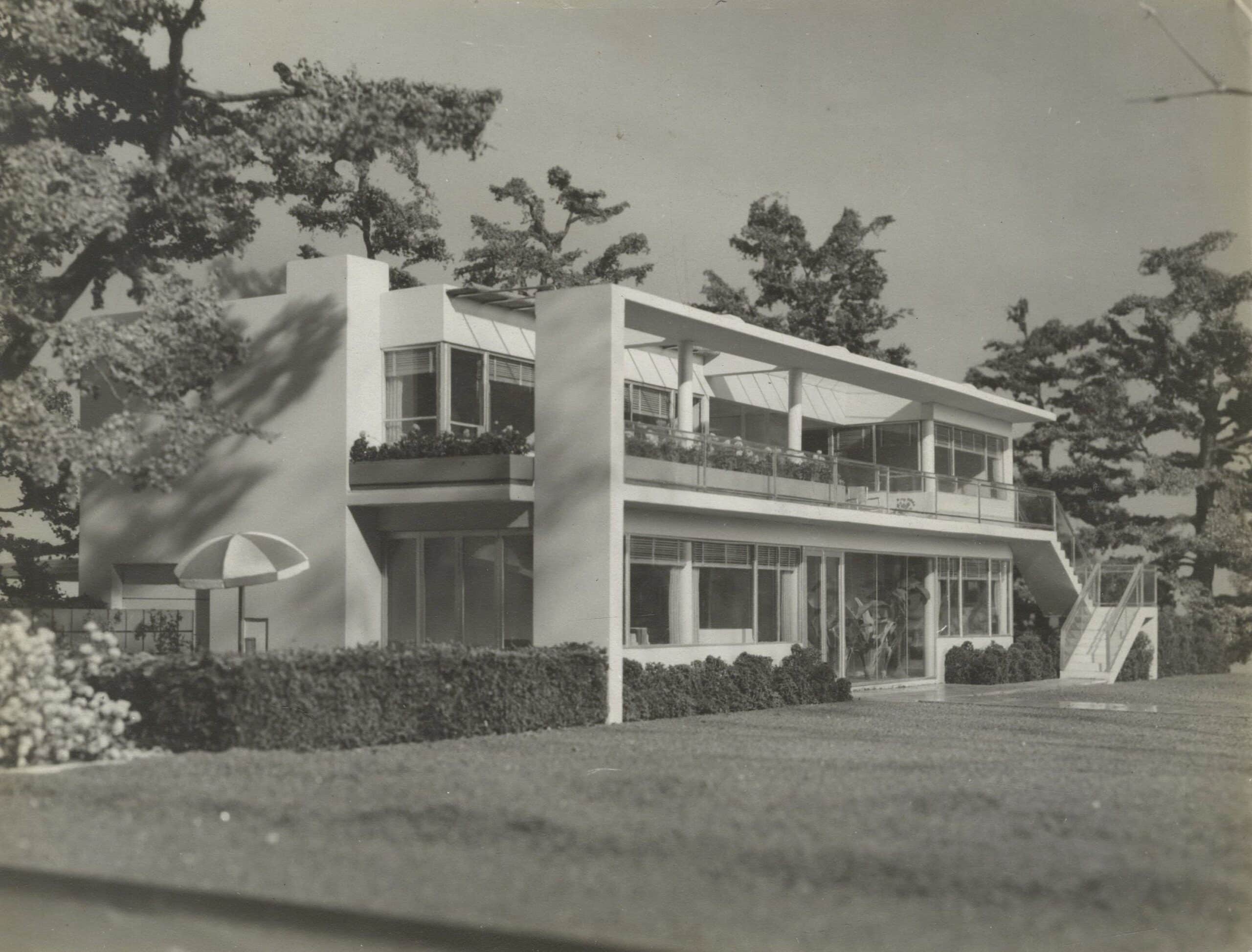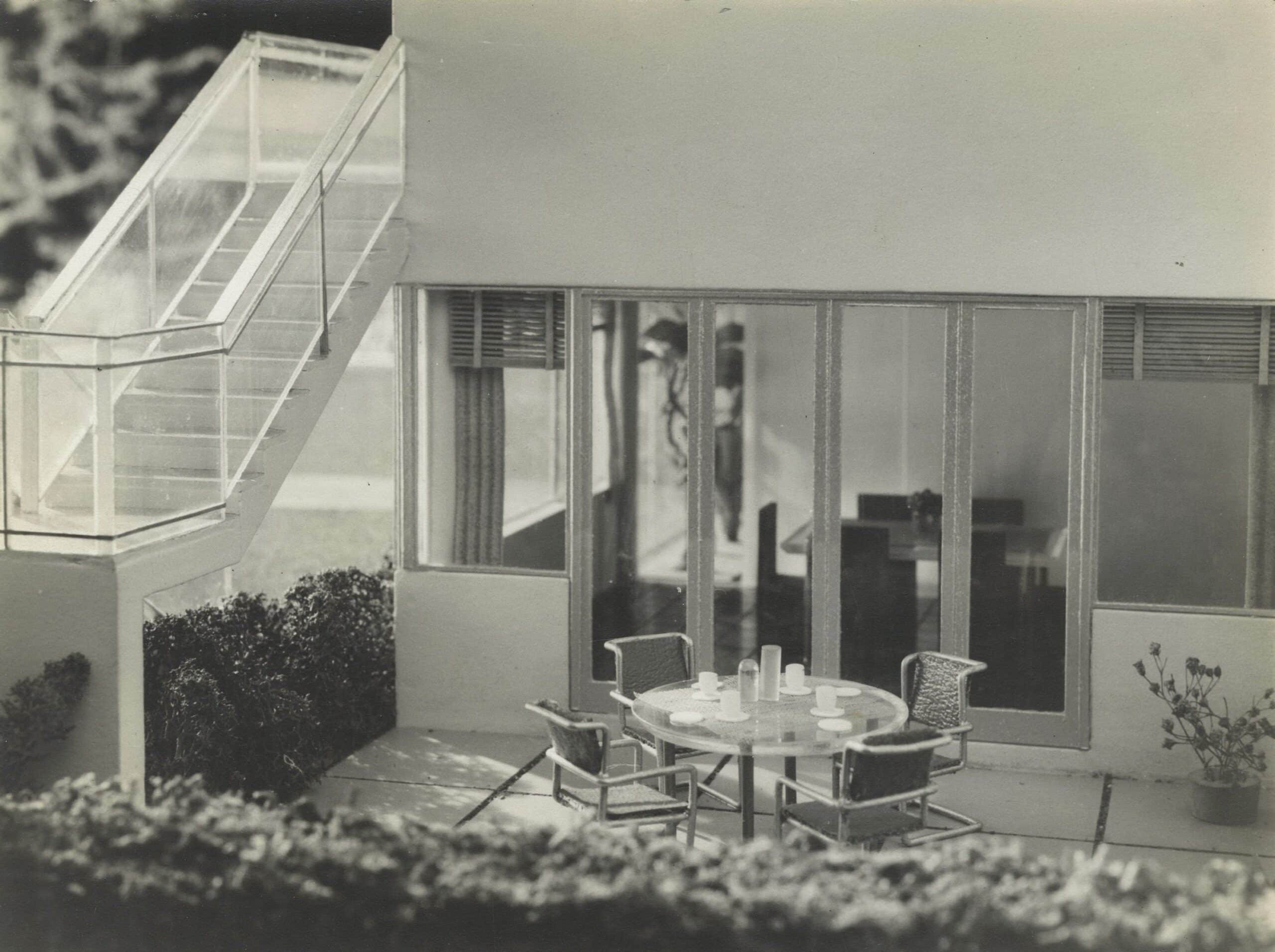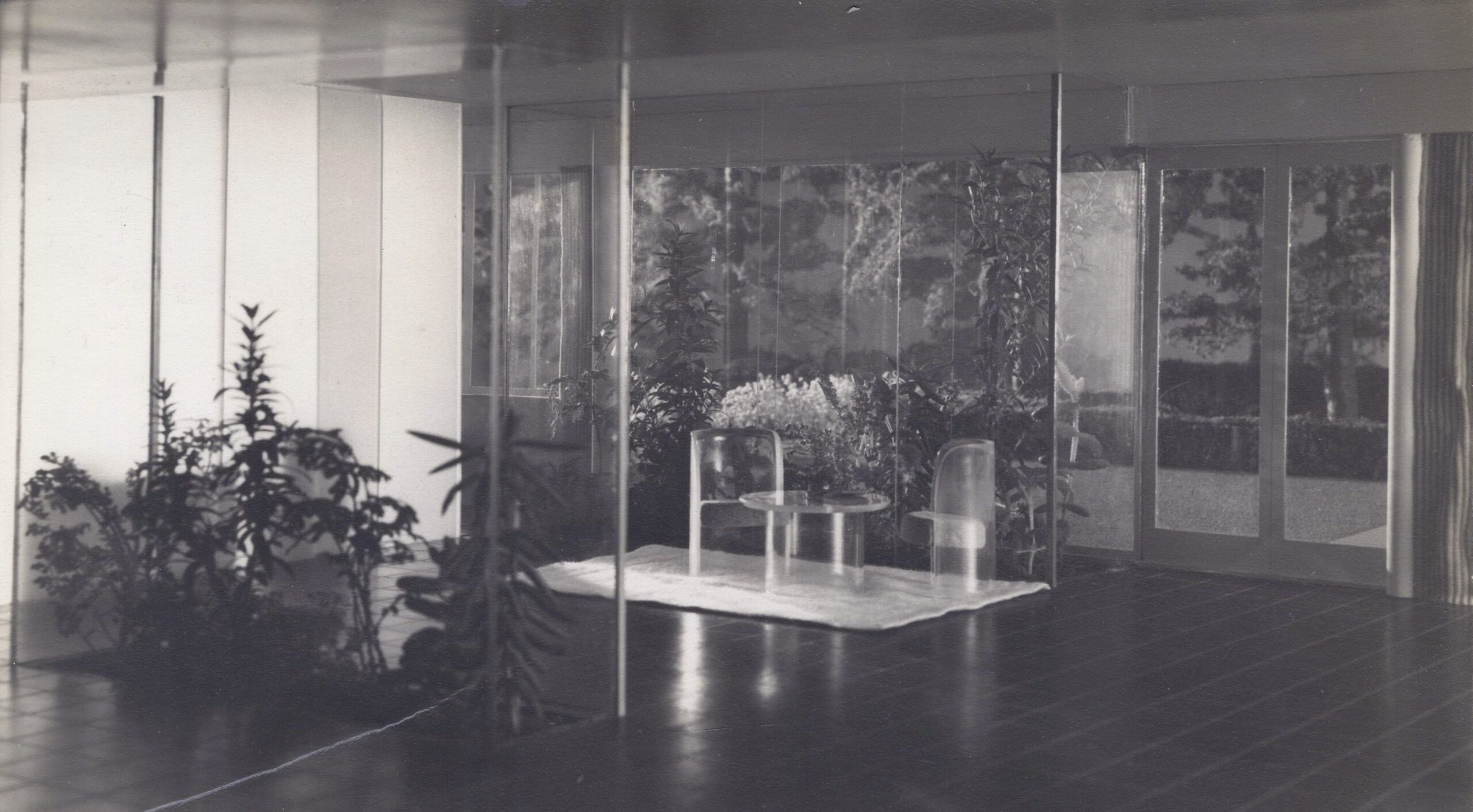The Architectural Models of Theodore Conrad: The ‘Miniature Boom’ of Mid-century Modernism (2021) – Review

The historian and curator Teresa Fankhänel’s latest book and first monograph, The Architectural Models of Theodore Conrad: The ‘Miniature Boom’ of Mid-Century Modernism, takes a slightly different tack to the recent spell of research about models that has appeared on the shelves of historians and architects alike. For one, Fankhänel focuses her study on one figure: Theodore Conrad, the so-called ‘Dean of models’, who rode the wave of post-war construction, quietly constructing a career in the process that saw him create miniatures for both architects and their clients of every important building in New York, from Lever House to the Metropolitan Life Building to the Museum of Modern Art. Other recent books charting the impact of the architectural model on building cultures have tapped into a wider interest in material histories in the last few years, specifically in the tools of the architect, including The Alphabet of Architectural Models (London: Merrell, 2021), edited by Olivia Horsfall Turner, Simona Valeriani, Matthew Wells and Teresa Fankhänel herself, and a recent special issue of Architectural Theory Review, edited by Matthew Mindrup and Matthew Wells, titled The Architectural Model as Tool, Medium and Agent of Change. But the strength of Fankhänel’s offering is that it is not just about the objects (the models, that is), although the material history of model making as a practice is very well-covered, but also about the personalities that surrounded and created them.
The book’s chapters are divided mainly by the type of source media Fankhänel has gathered (save the first chapter, which gives a background to model making as a profession, and to how Conrad came to be involved in it). The second chapter focuses on modelling materials, and the invention of new types of material such as Plexiglas that would revolutionise model making. Chapter three concentrates on model drawings, chapter four on model photography, and chapter five on the remaining traces of model displays (exhibitions and world fairs). Each section begins with a general history that contextualises twentieth century developments in these media within the long history of architectural model making dating back to the Renaissance. The bulk of the remaining text is dedicated to the practice of Conrad and his colleagues and contemporaries, painting a lively picture of the New York pre- and post-war architectural scene.

Fankhänel’s interest in architectural models began with a 2012 exhibition at the Frankfurt Deutsches Architektur Museum showcasing some of the best of their impressive archival holdings of models, which not only spearheaded the current revival of interest in the topic, but also spawned a dense catalogue titled The Architectural Model: Tool, Fetish, Small Utopia (Scheidegger & Spiess, 2012), edited by Oliver Elser (curator) and the museum’s Director, Peter Cachola Schmal. As a curatorial assistant on the project, Fankhänel was tasked with researching the histories of the models on loan from the Museum of Modern Art in New York, and in doing so she came across what amounted to a goldmine of archival records kept by Conrad himself (and preserved in the basement of his former studio in Jersey City by his family). Conrad turned out to have been a meticulous chronicler of his own legacy, leaving Fankhänel with a series of original model pieces as well as a richly detailed portrait of the projects on which he worked, and the personalities with which he interacted. In the years since, and while she completed her PhD on the topic which now forms the basis of this book, Fankhänel was instrumental in securing a place for the majority of this important archive in the Avery Architectural and Fine Arts Library at Columbia University.



Conrad worked with an astonishingly broad range of figures, and not just architects. The sculptor Isamu Noguchi, for example, stayed at his Jersey City home during their collaboration. Conrad also made a model for an unrealised sculpture by Fernand Léger. But it was the interactions (and rivalries) between Conrad and the photographers he worked with to capture images of the models that stands out. As Fankhänel notes, much of what survives of Conrad’s models is through the photography of greats such as Louis Checkman and Ezra Stoller. The photographs of the models transform our reception of the building being represented two times over, creating their own worlds just as the original models do: and the inventiveness of that era’s photographers (armed with 45-degree mirrors and their new pinhole cameras) in capturing and enhancing those miniature worlds have yielded methods of representation still being practiced and taught in architectural education today. Conrad’s Pittsburgh House of Glass model of 1939, and its carefully composed photography by Louis Checkman, is a case in point. These photographers also invented clever early forms of montage while looking for solutions to the problem of showing a model in its real site setting.
The great Renaissance chronicler of the Lives of the Artists, Vasari, warned architects against ‘admiring the hand of the model maker’, says Fankhänel. Alberti too warned against allowing a model made by a craftsman to speak too boldly for the architect’s design. The fear that the model object, formed by another hand, may make strange the architect’s idea, possessing the agency to slip away from their control, seems to have been a longstanding one. Yet in the twentieth century this changed, and models satisfied the demands of the new, plastic architecture of modernity. To see the building from all its angles was something a drawing could simply not provide. Where architects were once pictured with their compasses in hand, they were now pictured holding models aloft for their amazed clients (Fankhänel provides some humorous examples). But along with a new reliance on models came the necessity of collaboration Vasari so feared. It is clear Fankhänel views the design of a building as primarily a collaborative process, and her book is in some sense an argument for it. Yet in her eagerness to write a hagiography of the model maker, she perhaps slightly overstates Conrad’s importance. While he and his work were undoubtedly key players in the mid-century American architectural scene, the contribution of a model maker is by no means akin to the work and responsibility taken on by the architect’s office, and much of what makes Conrad an interesting figure to write about is his relationships with those architects, including Harvey Wiley Corbett, Gordon Bunshaft, Edward Durell Stone and Norman Bel Geddes. Though it is certainly likely that Conrad was frequently called upon to resolve unresolved aspects of a design in the model (‘How often have I heard rumblings from the shop “What a lousy set of drawings” only to hear a designer say, “send over any old thing. Conrad will have to figure something out in order to build the model”’), it is very difficult to estimate or quantify the magnitude of these contributions.

At other moments, however, Conrad’s contribution is nicely (and perhaps unintentionally) underplayed in small asides: for example, when Fankhänel explains how the glass facade of Lever House was conceived partly as a result of Conrad’s inventing a new method of creating transparency in the model – through the scoring and cutting of Plexiglas. As she explains, ‘Conrad made it possible to realistically depict the glass in models, which had proved hitherto to be one of the major obstacles to building tall glass towers, as clients were unwilling to take a gamble on designs that seemed unfeasible even at a small scale.’ She also notes where models take on a life of their own, becoming artefacts with their own logic, separate from the buildings they represented. While a skyscraper’s glass facade may not be load-bearing, for example, the model Conrad built to conceive of it made its Plexiglas elements key to the structural stability of the miniature. Models, it seemed, could be built to deceive as much as to explain, hovering on the border between the apparent and the real.
Piecing together the threads of Conrad’s life and work has clearly been a mammoth undertaking, best exemplified by Fankhänel’s comment that ‘everything seems at once visible and yet obscured by the magnitude of details.’ Occasionally, too, it seems that her mode of writing mimics the circumstances of its production. Fankhänel’s prose style is extremely dense, and single paragraphs sometimes run to over a full page in length. An astute editor would and should have remedied this, and it is also puzzling to see that simple grammatical slip ups or sentence repetitions have on many occasions not been corrected in the editing process. The book’s graphic design doesn’t help the clarity of the text either, since the choice of font doesn’t lend itself to reading such large blocks. Considering the quality and rarity of Fankhänel’s archival material, there was also surprisingly little attention given to the layout and size of the images chosen for inclusion, which feels like a missed opportunity. In many cases, the best visual material could have been increased in dimension to break up the text. These quibbles are, however, not really the fault of the author, and should be laid at the feet of the publisher and their production processes first and foremost.

The book abstains from offering a conclusion, leaving the carefully assembled evidence to speak for itself. The fact that this evidence, in the form of the Conrad archive, languished in obscurity for so many years is quite astounding: but it has been in part explained by Fankhänel as the result of both an economic downturn during the 1970s, and the associated return to the drawing over the model as the major repository of architectural knowledge. As the ‘paper architect’ experienced a resurgence in this later period, Conrad’s models, and the architects he built them for, were associated by the profession with destructive corporate interests and the triumph of cynical real estate developers in America’s cities. Architects were turning away from commercial partnerships, in part because they had no choice: the real estate boom had ended and there would be many lean years to follow. Yet the resurgence of interest in working with models in the last ten years has now forced a reappraisal of this period of history, and of Conrad’s work, as illustrative of a rare and productive moment of cooperation, fuelled by a broad utopian optimism about the future of America, between the market forces and the ‘creatives’: that is, between those that would build the city, and those that would dream it.
Teresa Fankhänel, The Architectural Models of Theodore Conrad: The ‘Miniature Boom’ of Mid-Century Modernism (2021) is published by Bloomsbury. Copies of the publication can be purchased here.
Emma Letizia Jones is an architectural historian, writer and Assistant Professor at Hong Kong University.
